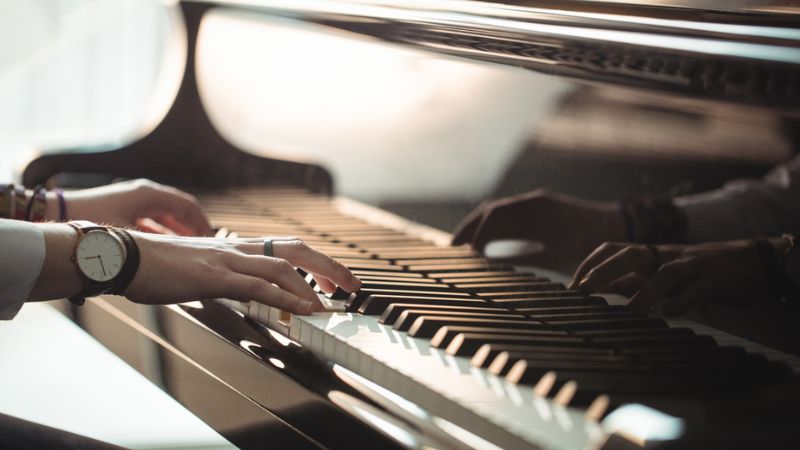Blog
How to Play Both Hands Piano
Learning to play the piano with both hands is an essential skill that can elevate your music-playing experience. While it may seem challenging initially, mastering this ability enhances coordination, rhythm, and your overall musicality. Mutecredit.com will walk you through effective strategies and exercises for how to play both hands piano, making it approachable even for beginners.
Why Playing Both Hands Piano is Important
Playing the piano with both hands allows you to create more complex and richer sounds. Each hand often performs different tasks—the right hand typically plays the melody, while the left provides harmony or rhythm. Developing this skill enables you to:
- Perform a wider repertoire of music
- Enhance your hand-eye coordination and motor skills
- Strengthen your musical interpretation and expression
Understanding the Basics
Know the Keyboard
Before attempting to play with both hands, familiarize yourself with the piano keyboard. Understand:
- The layout of the keys (white and black keys)
- The relationship between notes and octaves
- Basic scales and chords
Read Sheet Music
Learn how to read sheet music for both the treble clef (right hand) and bass clef (left hand). Practice identifying:
- Notes in each clef
- Key signatures and time signatures
- Basic rhythms and dynamics
Separate Hands Practice
Start by practicing each hand’s part separately. For example:
- Play the melody with your right hand until you feel comfortable.
- Practice the left-hand accompaniment or chords independently.
How to Play Both Hands Piano
Hands-Independent Practice
Achieving independence between your hands is crucial. Try these exercises:
- Simple Rhythms: Practice playing a steady beat with your left hand while your right hand plays a simple melody.
- Alternating Patterns: Alternate between hands, playing one measure with the right hand and the next with the left.
Start Slow
When combining both hands, begin at a slower tempo. Focus on accuracy and synchronization rather than speed. Gradually increase the tempo as you become more comfortable.
Use Repetition
Repetition is key to building muscle memory. Repeat short passages of music multiple times until the movements feel natural.
Break It Down
Divide the piece into smaller sections. Work on each segment separately before combining them. This method helps reduce overwhelm and ensures mastery of individual parts.
Clap the Rhythm
Clap the rhythm of both hands’ parts simultaneously before playing. This helps internalize the coordination required.
Exercises for Both Hands Coordination
Scale Practice
Play scales with both hands, starting with:
- Parallel Motion: Both hands move in the same direction.
- Contrary Motion: Hands move in opposite directions.
Chord Progressions
Practice playing chords with your left hand while playing simple melodies or arpeggios with your right.
Hanon Exercises
The Hanon exercises are a series of drills designed to improve finger strength and coordination. Incorporate these into your daily practice.
Simple Songs
Start with easy, two-hand songs like:
- “Twinkle, Twinkle, Little Star”
- “Mary Had a Little Lamb”
- Beginner-level classical pieces
Overcoming Challenges
Coordination Issues
If you struggle with coordination:
- Practice slower and focus on one hand at a time.
- Tap the rhythm on a table before playing on the piano.
Difficulty Reading Both Clefs
Improve your sheet music reading by practicing sight-reading daily. Focus on one clef at a time, then combine them.
Frustration or Plateauing
It’s natural to feel stuck at times. To overcome this:
- Take breaks and return with a fresh perspective.
- Seek guidance from a teacher or online tutorials.
- Celebrate small milestones to stay motivated.
Tips for Success
- Set Goals: Define specific objectives for each practice session.
- Stay Consistent: Practice regularly, even if only for 15-20 minutes a day.
- Record Yourself: Listen to your playing to identify areas for improvement.
- Be Patient: Mastery takes time and effort, so be kind to yourself during the learning process.
Advanced Techniques
Once you’ve mastered the basics, challenge yourself with more complex pieces. Explore:
- Polyphonic Music: Pieces like Bach’s Inventions, which require both hands to play independent melodies.
- Jazz Improvisation: Experiment with left-hand walking bass lines and right-hand improvisation.
- Dynamic Control: Practice varying the volume and expression between hands for a richer performance.
Conclusion
Learning to play the piano with both hands is a rewarding journey that opens the door to a world of musical possibilities. By practicing methodically, staying patient, and challenging yourself gradually, you can master this skill and enjoy the full potential of your piano-playing abilities. Start with simple exercises, build up your coordination, and soon you’ll be playing beautiful, intricate pieces with confidence.


